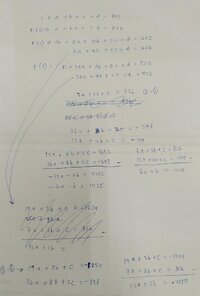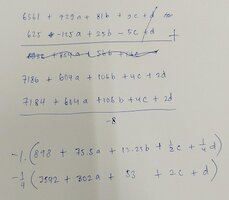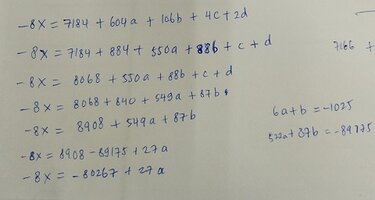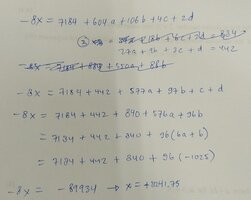Guys I am going in a loop for this one, may you give me a hint or suggestion on this :

I tried creating equations from the information given, and hoping to solve them simultaneously as follows :

but I am stuck in only producing 1 equation which is 6a + b = -1025.
.
.
then I tried approaching from the last sentence information as follows :

hoping I can see or obtain something, but I could not find/form anything useful.
Can you help me out please, thank you so much.
(I can't use calculator/technology for this question)

I tried creating equations from the information given, and hoping to solve them simultaneously as follows :

but I am stuck in only producing 1 equation which is 6a + b = -1025.
.
.
then I tried approaching from the last sentence information as follows :

hoping I can see or obtain something, but I could not find/form anything useful.
Can you help me out please, thank you so much.
(I can't use calculator/technology for this question)




